The 5 Best Canon AE-1 Lenses for All Types of Photography
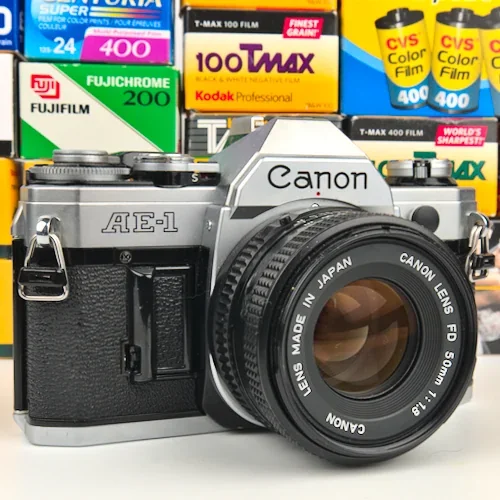
Production of the Canon AE-1 went on from 1976-1984. Over a million copies sold, which is why the camera is popular today. It is easy to find.
The Canon FD mount, was discontinued in 1987. All lenses are going to be 30-40 years old. Lens condition the most important consideration when buying lenses.
Market conditions and what’s available change over time. What was true in forum posts 10 or 15 years ago doesn’t mean that it is still true.
Availability, condition, usability, price, and types of photography determined lens choices. High prices excluded professional “L” series lenses.
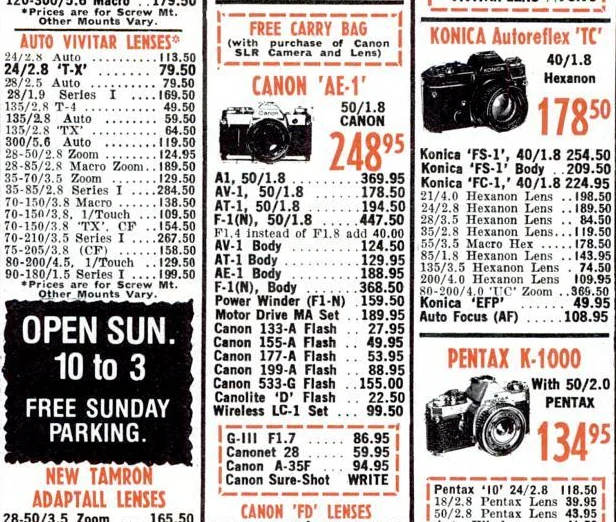
The magazein can be viewed on Google Books.
Best Price to Performance
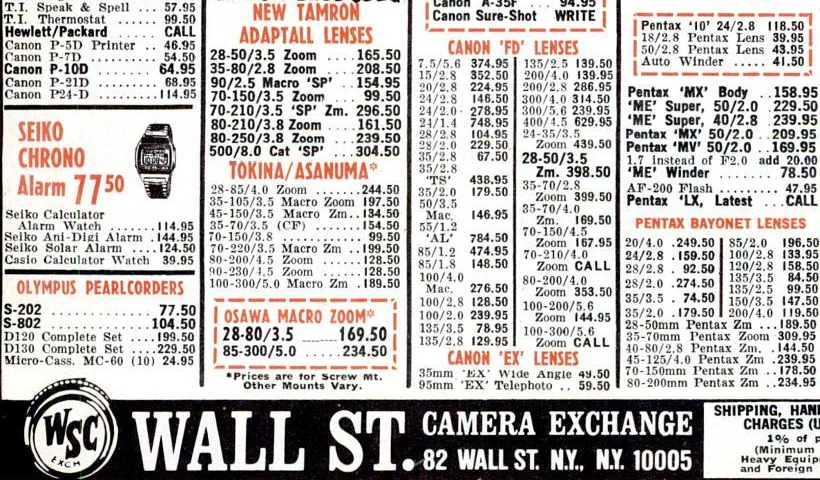
The most popular lenses being sold when the Canon AE-1 was being manufactured have the best price to performance. Supply and demand is difficult to work around.
These lenses are also the most widely available. That makes finding them in good usable condition easier.
Affiliate Links
Outside the Shot is a participant in the Amazon Services LLC Associates Program, an affiliate advertising program designed to provide a means for sites to earn advertising fees by advertising and linking to Amazon.com.
As an eBay Partner, I may be compensated if you make a purchase. I also participate in affiliate advertising programs with KEH and Adorama. More can be found on the Affiliate Discolsure page.
I have purchased gear from all of these companies and I expect them all to receive repeat business from me.
Kit Lens and Standard Primes
Canon FD 50mm f/1.8
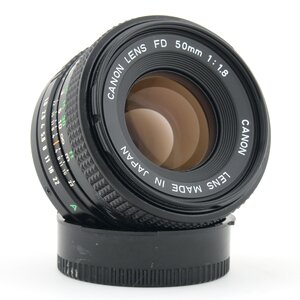
The best first lens is the 50mm f/1.8 because so many of them were made. They are as common as a 18-55mm on a entry level DSLR.
What’s nice is the f1.8 aperture is suitable for low light. The angle of view is similar to that of our eyes, making it easy for new photographers to learn to frame shots visually.
Great for travel, street, portraits, landscapes, architecture, snapshots, and casual everyday photography. It should be the easiest FD-mount lens to find and among the most affordable.
See current price and more information on:
Canon FD 50mm f/1.4
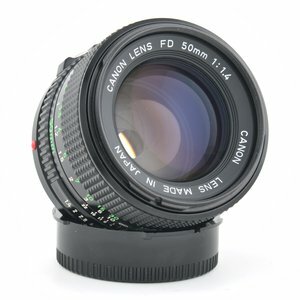
The Canon FD 50mm f/1.4 is 2/3 of a stop faster. I don’t think it is worth the additional weight and size.
If you’re having trouble focusing in low light with a f/1.8 lens, this would be a good lens. If you haven’t shot much with the AE-1, get the f/1.8 version.
Images shot at f/1.4 aren’t going to be sharp and the depth of field will be shallow. Stopped down, there isn’t a big difference between it and the f/1.8.
There are 4 different versions of the 50 f/1.4. The “new FD” version is the newest of the bunch and is the one to try to get as they will be less likely to have problems.
See current price and more information on:
Canon FD 50mm f/1.2
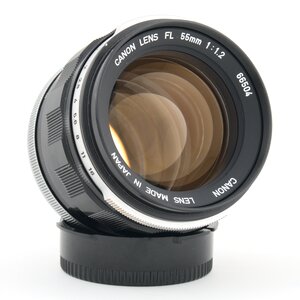
The 50mm f/1.2 was a “halo lens”, built for bragging rights and marketing purposes. Good luck trying to get anything in focus at f/1.2. The lens is also soft unless it is stopped down, at which point it is similar to other 50mm lenses.
Massive optical elements make these lenses large and heavy. Not the most enjoyable shooting experience.
Purchasing one can make sense if you also have a mirrorless digital body to adapt the lens onto. Focus peaking and/or magnification are much easier to focus with than a split prism. It’s also not expensive to take multiple shots to make sure at least one is in focus for a given composition.
See current price and more information on:
Alternative Standard Lenses
Here are some mostly 35mm alternatives. Expect to pay more than you would for a 50mm lens of comparable speed.
- Canon FD 35mm f/2 SSC
- Canon FD 35mm f/2.8
- Canon FD 35mm f/3.5
- Canon FD 55mm f/1.2
Wide Angle Lens
Canon FD 28mm f/3.5
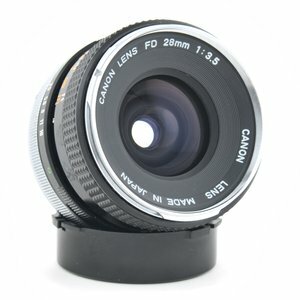
It’s the cheapest widest lens that’s reasonably available. Lenses with a wider field of view are going to be more expensive and more difficult to find.
There is a f/2.8 version, but it isn’t that much different. I would suggest looking for a lens that is in very good condition. They are common enough to where that should be possible to find.
28mm is a good focal length for architecture, landscapes, and street photography.
See current price and more information on:
Alternative Wide Angle Lenses
The wider the focal length, the more expensive the lens will be. Faster versions also go for significantly more.
Weights will vary based on the characteristics of the lens. Broadly, you’ll find lenses weighing between 170g and 500g. Faster apertures results in larger and heavier lenses.
- Canon FD 7.5mm f/5.6 Fisheye
- Canon FD 14mm f/2.8L
- Canon FD 15mm f/2.8
- Canon FD 17mm f/4
- Canon FD 20mm f/2.8
- Canon FD 24mm f/1.4
- Canon FD 24mm f/2
- Canon FD 24mm f/2.8
- Canon FD 28mm f/2
- Canon FD 28mm f/2.8
Portrait & Telephoto Lens
The 85mm focal length wasn’t as popular in 1976 when the AE-1 was released. 100mm or 135mm focal lengths were more popular as they were less expensive than 85mm.
Canon FD 100mm f/2.8
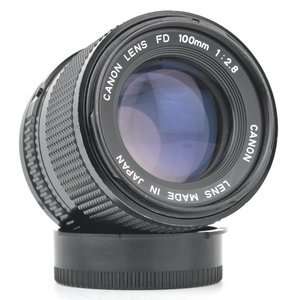
Inexpensive and small is a hard combination to beat. You can easily carry this lens with you and pull it out when the situation calls.
This isn’t a lens that is likely to be left on the camera for general photography. I would suggest getting it after a 50mm or 28mm lens.
See current price and more information on:
Alternative Telephoto Lenses
An alternative, the Canon FD 135mm f/2.8 is one of the cheapest prime lenses you can buy.
Canon FD 135mm f/2.8 ~$100. There are lots of third-party 135mm f/2.8’s. Avoid the third-party lenses as they are soft, have noticeable distortion, and have a cheap build quality.
There are 85mm lenses. The most expensive is the Canon FD f/1.2L lens, which will not be worth it. A more affordable option is the Canon FD 85mm f/1.8 lens, but it is expensive for the image quality compared to the Canon EOS EF 85mm f1.8.
- Canon FD 85mm f/1.2L
- Canon FD 85mm f/1.8
- Canon FD 100mm f/2
- Canon FD 135mm f/2.5
- Canon FD 200mm f/2.8
- Canon FD 200mm f/4
Zoom Lenses
Canon FD 35-105mm f/3.5 & Vivitar Series 1 70-210mm f/3.5
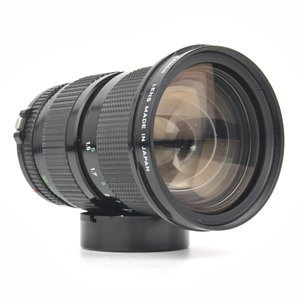
The convenience of pairing the Canon AE-1 with a zoom lens is appealing. Having a range of focal lengths available without needing to switch a lens is great.
Unfortunately, vintage zoom lenses have not aged well. It doesn’t matter what manufacture made them either. Nikon, Pentax, Olympus, Kiron, Komine, Sigma, Tokina, or Tamron tend to have the following problems:
- Haze and or Fungus
- Large amount of dust in the lens
- Loose or tight zoom ring
- Loose or tight focus ring
- Oil on the aperture blades
- Decentered lens elements
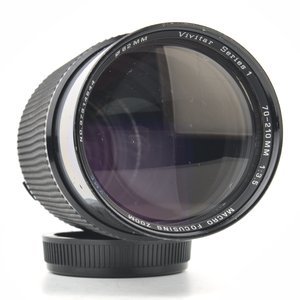
Keep in mind the drawbacks vintage zooms have.
- Image quality will not be good when shot wide open.
- One or both ends of the focal range may suffer from a large amount of distortion.
- Zoom lenses are larger and generally heavier than primes.
Alternative Zoom Lenses
Most zooms are going to be cheap to buy. Look for lenses that are clean and in good condition. (Good luck!)
- Canon FD 70-210mm f/4
- Canon FD 80-200mm f/4L
- Canon FD 28-85mm f/4
Macro Lenses
Vivitar 90mm f/2.8 & Vivitar 55mm f/2.8
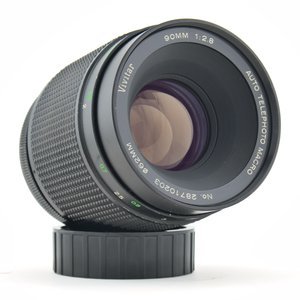
- My favorite vintage macro lens.
- Available in multiple lens mounts.
- Incredible value.
- Sharp corner-to-corner at f/8.
See current price and more information on:
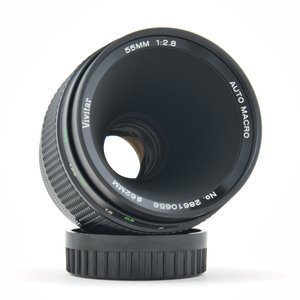
- My second favorite vintage macro lens.
- An excellent choice for close-up photography.
- It does not need an extension tube to reach 1:1 magnification.
See current price and more information on:
Both of the recommended macro lenses were made by Komine. The lens was also sold under the following brand names:
- Elicar
- Quantaray
- Panagor
- Spiratone
- Rokunar
Both are also ideal lenses for adapting on to digital cameras. Achieving critical focus is easier with manual focus lenses.
For shooting at macro magnification (1:1), the 90mm lens is going to be the better choice. It has the greater working distance.
The 55mm lens is excellent for table-top and close-up photography. It makes capturing detailed images easy.
There is a Vivitar 90mm f/2.8 Macro Lens Review and a Vivitar 55mm f/2.8 Macro Lens Review.
Alternative Macro Lenses
The Canon FD macro lenses requires an extention tube to achieve 1:1 macro magnification. The lenses will still be usable without the extention tube. They will be limited to 1:2 magnification.
- Canon FD 50mm f/3.5
- Canon FD 100mm f/4
- Canon FD 200mm f/4
FD vs new FD Lenses
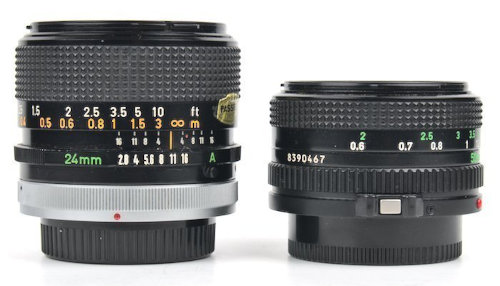
The entire new FD lens rotates to lock onto the camera. Original FD lenses have a breech-lock ring at the back of the lens that needs to be turned in order to mount a lens.
FD and new FD lenses are interchangeable with each other. There are no compatibility issues.
Sometimes you will see new FD lenses referred to as FDn lenses.
The change in the design of the breech-lock ring was due to complaints about lenses getting stuck. This can be avoided by going slow and not forcing anything.
Telling FD and FDn Lenses Apart
Canon FD and new FD lenses can be visually identified. New FD lenses will have a red button on the barrel of the lens, near the mount.
The older FD lenses have a metal ring that needs to be rotated after the lens is mounted to lock it into place.
FD vs FL Lens Mount
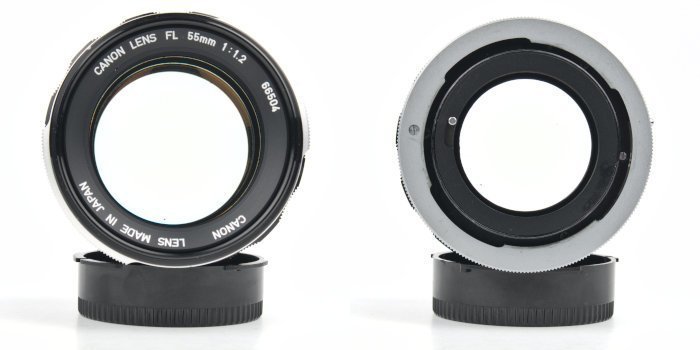
The Canon FL mount preceded the FD mount. You can use FL lenses on the FD mount, and FD lenses can be used on the FL mount.
What Canon FL mount lenses lack is the ability to do auto stop-down metering. This means the lens will need to be stopped down with the depth-of-preview switch in order for the light meter to display an accurate reading.